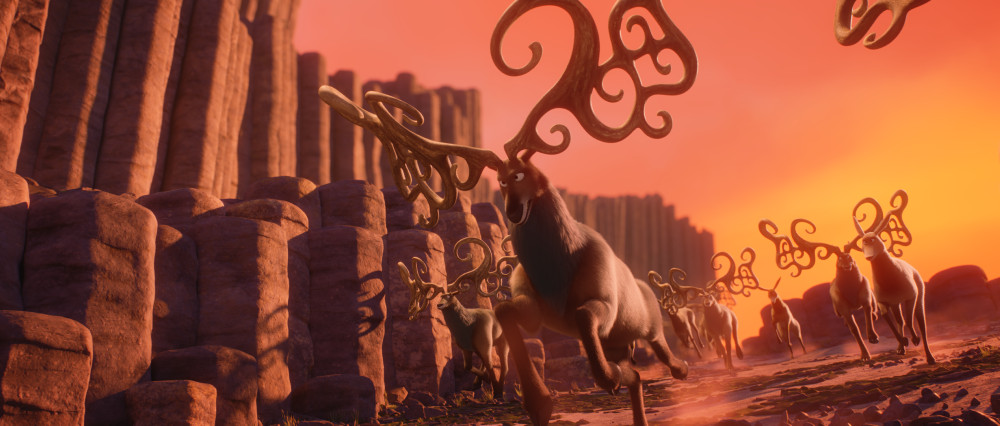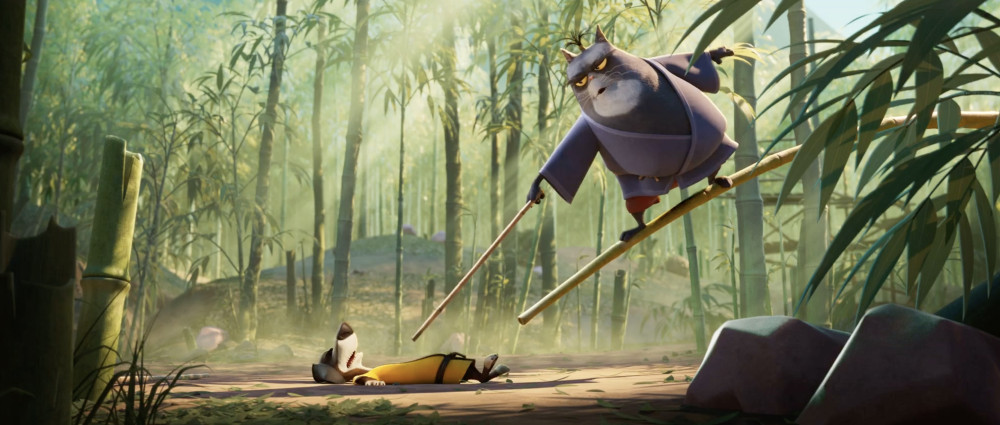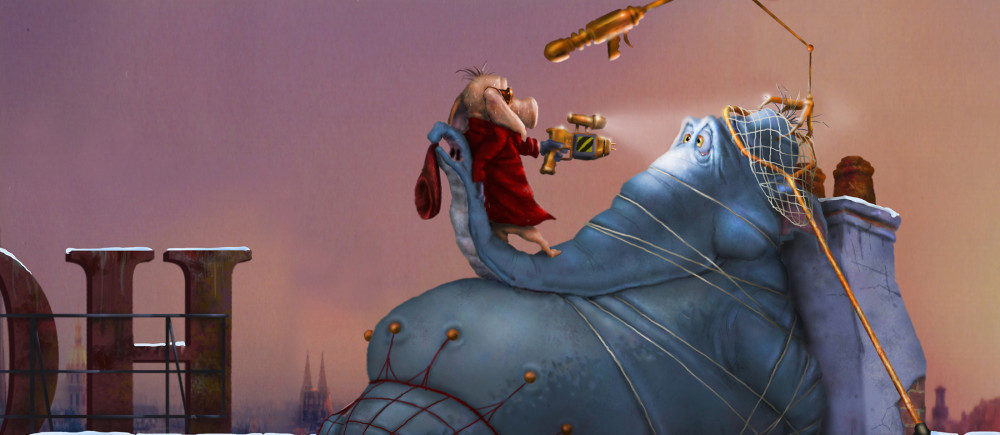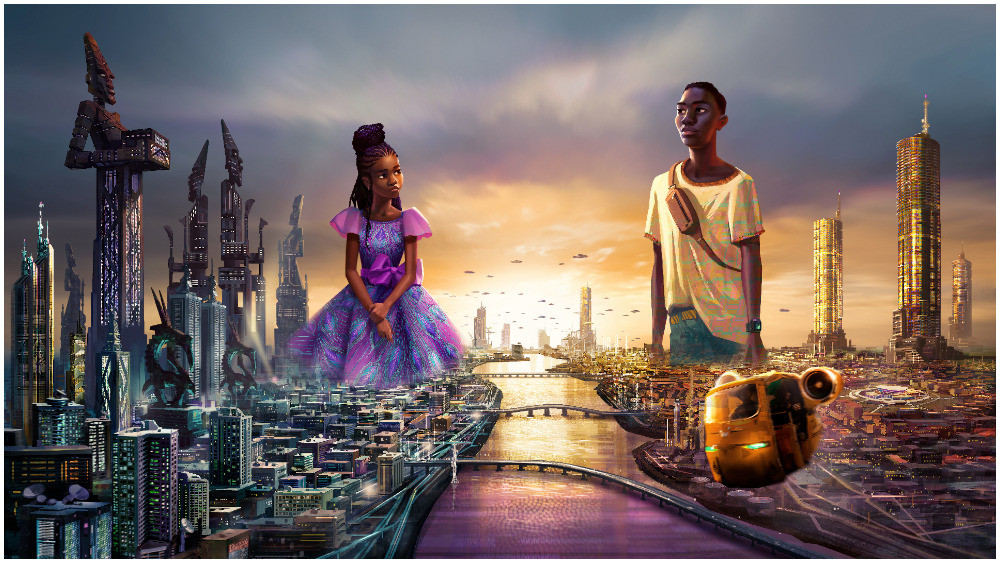***This article originally appeared in the December ’21 issue of Animation Magazine (No. 315)***
Even if you are a casual observer of the animation and VFX landscape, chances are you have admired the work of Cinesite over the past three decades. The studio, which is celebrating its 30th anniversary this year, has been responsible for creating some of the most iconic images in the world of film, TV and gaming — in Space Jam, Band of Brothers, World War Z and the Marvel, Pirates of the Caribbean, Harry Potter, X-Men and James Bond franchises, to name a few.
“Cinesite’s 30th is a remarkable achievement for an independent studio,” says CCO Dave Rosenbaum. “We want to showcase the landmark moments and inspirational people who got us to where we are, to inspire the next generation of storytellers to push the boundaries of visual effects and animation. We’re standing on the shoulders of giants who contributed to some of the biggest blockbusters in history, not to mention all the awards those crews have been nominated for or won. Celebrating 30 years builds a camaraderie throughout the group with shared company pride and spreads externally attracting more top talent, bigger partnerships and bolder projects.”

A New Focus on Animated Ventures
Rosenbaum points out that the studio launched a feature animation division in Montreal in 2016 and acquired Nitrogen Studios in Vancouver the following year. “In the time since, we’ve delivered an astounding 10 feature CG films,” he points out. “Our first four were low budget per the client, 3QU Media: Charming, Gnome Alone, Dog Gone Trouble and Fearless. Then when Toronto’s Arc Productions closed, we took over The Star for Sony. They needed it by Christmas that year [2017], so we had to deliver in a record nine months, which we successfully did. And that was all just in our first two years of trying to ramp up the studio! More recently, we’ve delivered Extinct for China Lion, Addams Family 1 & 2 for MGM, and have a multi-picture deal with Aniventure.”
The studio just wrapped production on Blazing Samurai directed by Rob Minkoff (The Lion King) and starring Mel Brooks, Ricky Gervais and Samuel L Jackson. Currently in production is Pulitzer Prize-winner Berkeley Breathed’s Hitpig, starring Peter Dinklage as the title character. The studio recently announced it was in production on the six-part animated series Iwájú for Disney Animation and Kugali, which Rosenbaum describes as “a monumental project in every way.”
Audiences will definitely have plenty of reasons to anticipate the studio’s pictures in the coming years: “Riverdance appealed to us because it’s so unique and entertaining,” says the CCO, who also directed the movie alongside Eamonn Butler. “It’s a musical but without lyrics. It relies on physical performance and speaks through interpretation, evocative energy and the music itself. It’s thunderous, disciplined and visceral — all the things we love in cinema. It features the voices of Pierce Brosnan, Lilly Singh, Aisling Bea and Brendan Gleeson. Bill Whelan, who won the Grammy for the stage show, composed the score.” The movie premiered as a Sky Original in the U.K. & Ireland in May.
“I think the same two words would get anyone excited about Blazing Samurai … Mel Brooks!” he adds. “Based on the seminal film Blazing Saddles and directed by Lion King legend Rob Minkoff, the film tackles the long-standing prejudices of cats and dogs with action-packed slapstick hilarity. The film stars Michael Cera, Samuel L Jackson, Ricky Gervais, George Takei, Djimon Honsou, Michelle Yeoh and the legend himself, Mel Brooks.”

Another big studio highlight is Hitpig. “Remember reading comics in a real newspaper?” asks Rosenbaum. “I remember fondly Bloom County and Opus from Pulitzer Prize winner Berkeley Breathed. When Berkeley pitched me Hitpig, I knew immediately we needed to bring his wild imagination into our studio. Berkeley is not only writing and executive producing the film, we also hired him to be the character designer and work closely with our art department. We don’t just option pitches, we create long-term partnerships with filmmakers; we want them as much as we want the project. Hitpig is a film unlike any other and is directed by Cinzia Angelini [director of Mila, an award-winning short that Cinesite and Aniventure also produced this year] and David Feiss [creator of Cow & Chicken]. Peter Dinklage voices our title character and is surrounded by the voices of Lilly Singh, Rainn Wilson, Hannah Gadsby, Charlie Adler and RuPaul.”
When asked about Cinesite’s strongest assets, Rosenbaum responds, “People, people, people. Our artists, our crews, our executives all love what they do — and when you love what you do, you put everything into it, and your partners and audiences feel it. We don’t have ivory towers filled with mysterious suits. Everyone rolls up their sleeves and takes on multiple tasks because to be given the opportunity to share stories and art with the world, is a privilege. On our busiest days, about 1,500 people work within the Cinesite Group (which includes Image Engine and Trixter) with offices in Vancouver, Montreal, London, Berlin and Munich. And we’re still growing!”
One of the unique aspects of Cinesite is how its two different animation and VFX entities work and complement each other. “A company that has been creating award-winning visual effects for 30 years works quite naturally alongside a new animation powerhouse,” says Rosenbaum. “The crossover between technology and talent has become more entwined over the years and both are becoming even stronger as the art forms and skillsets merge. In the early 1990s, Cinesite made history with the first digital processing of a feature film, an animated one no less: Disney’s Snow White and the Seven Dwarfs. After that, Cinesite took 18,000 special effects elements for the first Space Jam, and with never-before-used techniques put Michael Jordan in an animated world full of Looney Tunes characters. So, you could say, Cinesite has been pushing VFX and animation to work together since the very beginning!”
So, how does the animation side plan to stay competitive and ahead of the curve?
“When we were starting this animation business five years ago, our conversations focused on this exact point,” says the savvy CCO. “The marketplace was already getting crowded and production costs at other studios were quickly rising. Even though overall box-office business was robust, box office for individual films was declining because audiences had more choices but the same finite amount of money. Time and COVID have only exacerbated this. We were, and still are, looking at how we can leverage the latest technologies and best talent to deliver compelling stories within new economic demands.”

Setting a High Bar
“It’s no new secret that story and talent are key, nor is it a secret that artists need time and resources to explore and create,” Rosenbaum adds. “As experienced filmmakers, we knew the dangers of rushing schedules and pushing budgets too low. We needed to set a quality bar audiences expect from high-end animated features, but at a controlled budget level that mitigated as much commercial risk as possible.”
“Many established studios are facing this prospect now,” he continues. “But dramatically reducing their budget levels is more challenging, because they have been designed around higher expectations where any attempt to try and reduce budgets would run the risk of compromising and impairing the quality of the finished content. In our case, these budget expectations are built up from the ground, involve all the key leads and creatives who use our budget caps as a goal, then strategize their creative outcomes from there.”
Looking back at the challenges of the past year and the changing dynamics of streaming vs. theatrical releases, Rosenbaum says, “The entire entertainment industry was challenged in a way that our collective creative minds failed to imagine. (Except for Bill Gates, of course, who saw it coming. He’s on my Google alerts now, I’ll never miss another word.) But great challenges stimulate creativity and force us to problem solve differently in search of better outcomes. The animation community is becoming stronger because talent and distribution is becoming democratized. New voices are being given new platforms and consequently audiences are being given more choices. There wasn’t a ton of good news in 2021, but maybe that’s a silver lining!”
As he points out, “It was a physically and emotionally heavy year and a half for the planet. But we are fortunate enough to work on and provide something that allows people to find a little joy and escape the real world for a couple hours!”
To learn more, visit cinesite.com.













